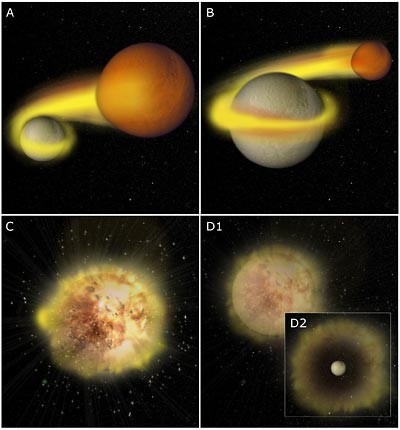Just when you’d given up hope of another starburst, a third type comes along unannounced! This third class of previously unidentified supernova could help explain some anomalous observations in the night sky and even how our bodies come to contain so much calcium.
Until recently, astronomers had assumed there were just two types of supernovae. The first two types of supernova are either hot, young giants that explode on to the scene violently as they collapse under their own weight, or old, dense white dwarves (type a1) that undergo a thermonuclear explosion to briefly add their light to the night sky.
However, a third class appeared in telescope images in early January, 2005 and scientists, seeing that it had recently begun the process of exploding, started collecting and combining data from different telescope sites around the world, measuring both the amount of material thrown off in the explosion and its chemical composition.
Avishay Gal-Yam and colleagues at the Weizmann Institute in Israel and teams in Canada, Chile, Italy, UK, and USA, soon realised that the new supernova was neither old and dense nor young and hot.
There was too little material being ejected by the 2005 supernova for it to be an exploding giant, but its remote location from stellar nurseries suggested it was old. Moreover, its chemical makeup did not match the second type of supernova. The scientists turned to a computer simulation to see if they could figure out what kind of stellar processes could give rise to this anomalous kind of starburst.
Type Ia supernovae are primarily composed of carbon and oxygen as seen in their spectra, but the newly discovered supernova has unusually high levels of calcium and titanium which derive from nuclear reactions of helium not carbon and oxygen. However, the astronomers were initially at a loss to explain the source of the helium. Their simulations suggested that a pair of white dwarves might have been involved, with one assimilating helium from the other. When the thief star’s helium load rises past a certain point, the explosion occurs. “The donor star is probably completely destroyed in the process, but we’re not quite sure about the fate of the thief star,” says Gal-Yam.

These new supernovae are relatively dim, so may not be as rare as they at first seem. This might explain why calcium is so prevalent in the universe and so in life on earth. The existence of radioactive titanium from these supernovae might also preclude the need for exotic explanations, such as invoking dark matter, of positrons at the heart of our galaxy. “Dark matter may or may not exist,” says Gal-Yam, “but these positrons are perhaps just as easily accounted for by the third type of supernova.”